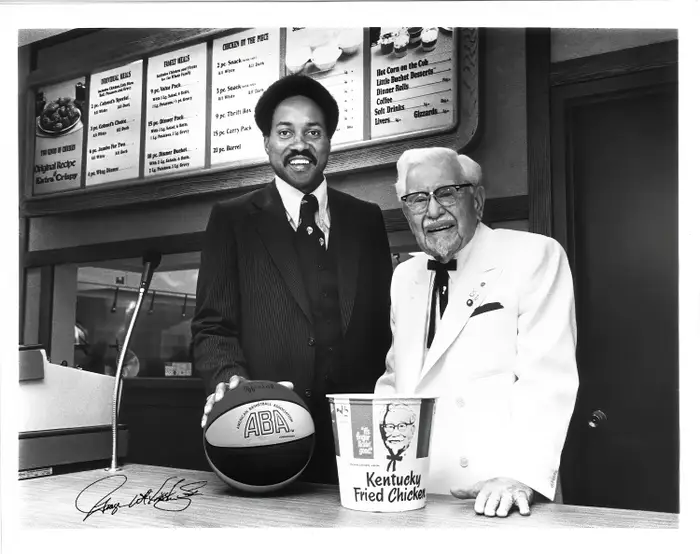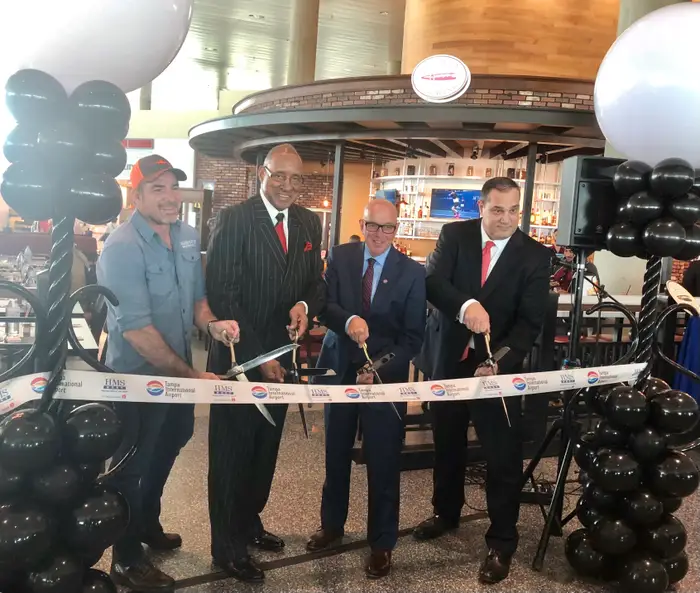I’ve owned over 60 restaurants — KFC, Chili’s, PF Chang’s, Burger King, Pizza Hut, and more. Here’s how I got my start and scaled.

George Tinsley started working for KFC in the training department.
I started my career in professional basketball before teaching and coaching at the high school level. However, once I started my family, I began looking at my career from the financial side instead of the heartwarming side, where I focused on just giving back to the community.
That’s how I started working in the fast food industry. I got a job offer to work for KFC in the training department — it was more money, a new opportunity, and something I didn’t have any background in.
Eventually, I backed into the franchising business. I’ve owned and operated over 60 restaurants in locations across Kentucky and Florida, including KFC, Chili’s, PF Chang’s, Burger King, Pizza Hut, and more.
It was a quick learning process; however, it wasn’t always easy.
It was hard to start the franchise, even though I technically knew what to do
In 1976, when I was 30 years old, I had the opportunity to learn from the colonel himself — the real icon Harland David Sanders. I worked there for eight years, learning about the resources that the KFC corporate structure provided to franchisees and understanding the technical aspects of how the business should run.

Colonel Sanders sold KFC in 1964 but remained with the company as a brand ambassador.
After year three, I was interested in becoming a franchisee. At that time, it was expected that you’d have $1 million in liquid assets to qualify, and I was nowhere near that. I knew it was going to be an obstacle.
You can’t just go out and borrow that kind of money, and I didn’t make that kind of money playing professional basketball in the early 1970s — so I had to put that goal on the shelf. My role at KFC also changed to operations at that time, and that’s when I really started learning about the business.
My first week in business was chaos, but the learning process was quick
When I finally opened my first restaurant in 1984, it was an adjustment. The very first week, I had to shut it down for a half day because we ran out of product. My employees were also totally worn out.
After about a week it was total chaos. Fortunately, customers were coming in, but I learned we had to better prepare to move forward. It was a rude awakening.

Tinsley’s first restaurant opened in Auburndale, Florida.
Still, we were able to do way above what we were projected to do, and we received a lot of awards, but we didn’t have the time to actually attend the conventions where the awards were given out.
I’ll never forget when a lot of my friends were in Hawaii for an annual convention, and I wasn’t able to go. I literally had tears in my eyes because I had to operate that restaurant seven days a week until I felt comfortable leaving.
Franchise owners have to expand quickly, or they’ll miss out
About a year and a half after that location opened, we decided to start looking at a second location. When you have a restaurant that far exceeds average revenue — as ours did — the corporation and other franchisees start looking at the territory, so you either move fast or risk someone else opening another location nearby.
We decided to move fast and opened our second location two and a half years after the first, following a six-month build-out. Shortly after that, I opened my third location.
I started looking at other opportunities
When my very first restaurant burned down and we couldn’t operate, I got a truck to join the lunch truck stops. Today it’s called a food truck. My business continued to grow, and about five years in I started looking at other opportunities.

Tinsley performing a ribbon cutting at one of his restaurant locations at the Tampa International Airport.
KFC told me about an opportunity to put a location in the Tampa International Airport. I didn’t know much about the process, but I put in an RFP with a friend of a friend. We didn’t get the proposal, but I reached out to TGI Fridays to open a franchise and won that site.
My location went on to be the No. 1 TGI Fridays in the nation.
There are a couple of challenges to watch out for
Over the years, a lot of big national brands have started to franchise to big private equity groups, which I think has kind of eroded our image. They’re only interested in producing a profit for their investors and for themselves.
They’re cutting on things and are more interested in growth than taking care of their locations. It’s been a big challenge that’s hurt a lot of brands.

Members of George Tinsley’s KFC team pose in a restaurant.
Another challenge is motivating your employees and ensuring high standards are held.
Owners and corporate executives aren’t doing this. It’s important to hold people accountable to the policies and procedures, reward them for good performance, involve them in the decision-making process, and let them share in the business.
Bigger doesn’t always mean better when it comes to restaurant brands
Now, when I look for brands to work with, I look for ones with name recognition like those two, as well as all the resources they offer, like good local and national advertising. However, a bigger company doesn’t always mean better — you can have a lot of stores that aren’t doing great.

Tinsleycatering a senior softball game.
Even as a franchisee, it’s better to go slow, do it right, and manage your growth from both an operations and an economic standpoint.
I’ve also prioritized making sure my businesses are part of the communities they’re in, even with my airport location. Whether it’s through the Chamber of Commerce, involvement in local sports, or the Boys and Girls Club, that’s the kind of place where people want to spend their money.






